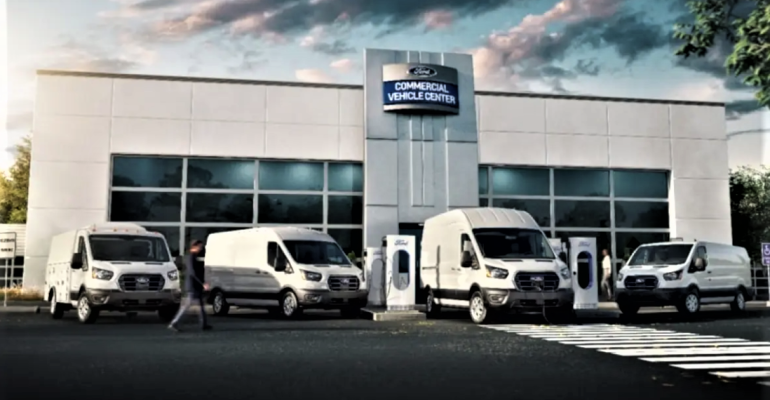From Ford’s plans to invest $50 billion in electric vehicles through 2026 to General Motors’ aspirations to sell 1 million EVs by 2025, manufacturers are making it clear that they’re going all-in on an electric future. However, for these EV goals to become a reality, EV charging infrastructure must expand rapidly. Auto industry leaders are calling on dealerships to play their part in building out EV charging infrastructure.
Several major manufacturers, such as Ford and Stellantis, already have released regulations that require dealers to install a specific number and type of EV chargers on-premises. If they don’t, they will be unable to sell EVs, which will make up an increasingly larger percentage of vehicles offered. Other manufacturers likely will follow suit with similar requirements.
From skyrocketing inflation to supply chain bottlenecks, car dealers have had numerous obstacles to overcome in recent years. As they face their newest challenge, installing EV charging, they have several hurdles to get past.
It’s common for dealers to own multiple dealerships with different brands. Because each of these brands has or will have its own regulations, navigating the requirements becomes complicated. Dealers cannot replicate one project across all their locations. In some cases, they might need to install chargers from different companies depending on the dealership, as brands such as Mitsubishi have signed exclusive agreements with EV charger manufacturers. Therefore, dealers must pay close attention to the differing regulations as their ability to sell EVs is on the line.
Ford and Stellantis require dealers to install Level 3 DC fast chargers, which are much more expensive than Level 2 chargers. These chargers also draw significantly more power, and in many cases, will require dealerships to upgrade their electrical capacity – further increasing costs. While the exact costs of implementing chargers will vary depending on the number, type and brand of chargers, as well as the extent to which power upgrades are needed, budget in most cases is dealers’' primary concern.
As more EVs are sold, EV charger manufacturers are struggling to keep up. As a result, the gap between supply and demand for EV chargers is significant, leaving customers with long lead times on chargers. With manufacturers setting deadlines for compliance with charging regulations, the clock is ticking, and dealers cannot afford to wait.
When dealerships were built, their electrical grids weren’t designed to power EV chargers, especially not DC fast chargers, which require 480V direct current. Therefore, dealerships implementing EV charging will most likely need to either bring in new power transformers or run a new 480V line. Both of these options require expertise, time and money.
Best Practices for Auto Dealers Installing EV Chargers
If you own multiple dealerships, it’s tempting to create a template for an EV charging project and apply it across each location. However, this would be a mistake. Not only do different brands have different regulations for the number, type and brand of chargers, but each state, and even each county, might offer different incentives for installing EV chargers. Regulations and rebates have the power to make or break an EV charging project, so dealers need to create a custom plan for each location that takes into consideration the unique opportunities and challenges of a given dealership.
EV charging projects require diverse skill sets that dealers won’t have in-house. But the breadth of the challenges can lead to dealers paying several subcontractors and costs escalating quickly. When outsourcing, it’s best to look for a partner that can take on the full scope of the project, from selecting and buying chargers, to navigating regulations and rebates, to installing and maintaining chargers. This will help keep costs in check, and your accountants will thank you.
From long lead times on chargers to bureaucratic permitting processes, adopting EV charging is not an overnight process. Furthermore, many rebates have a finite budget and operate on a first-come, first-served basis. Therefore, it’s critical to start quickly to meet deadlines from OEMs and take advantage of funding before it runs out.
While the challenges of implementing EV charging are significant, the opportunities presented by plugging into the EV future are far greater. According to one recent study, by 2027, the EV market will reach $139.10 billion. Dealers cannot afford to cut themselves off from the industry's future because of the short-term challenges of installing EV chargers. By following a proven strategy and seeking outside experts when needed, dealers can adopt EV charging, future-proof their business and ride the EV wave sweeping across the world.
Rich McNulty is the CEO of Blue Whale EV, an advisory and service organization to the EV charging community.





